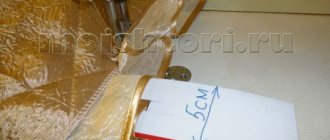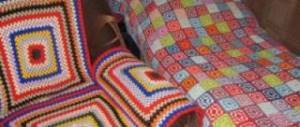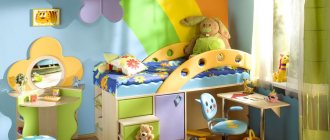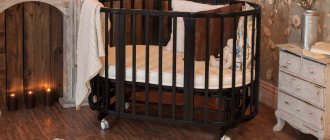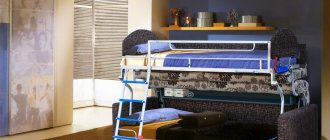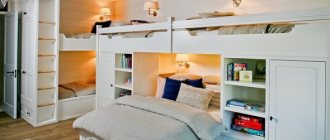How nice it is to sit down on a cold winter evening with a book in an armchair by the fireplace, wrapped in a soft, warm and very cozy blanket. Currently, there is a huge selection of high-quality natural wool blankets. Let's try to figure out what material is best to purchase this product from: camel wool, sheep wool or merino. Such blankets can be used as a bedspread and blanket, and will also become indispensable at a picnic.
What to pay attention to
First, you need to decide what specific requirements apply to this product. Experts advise choosing wool blankets according to the following criteria:
- size;
- compound;
- color;
- drawing.
You can choose any size: there are blankets for newborns, children and adults. They are used as covers for chairs. Despite the wide selection of various modern textiles, natural materials are the most in demand.
Photo gallery
Patchwork
Angry Birds
Winx Club
Disney princesses
NY
Cars
For girl
Sea
Young technician
SpongeBob
Merino wool blanket
Sheep of this breed live in the mountains of Australia, New Zealand, and Spain. To make yarn, we select the highest quality wool from the withers of a sheep. Due to living in cold climates, wool is able to retain heat well and not absorb odors and moisture. Creatine, which is found in animal hair, has bactericidal properties. It is believed that products made from merino wool have the peculiarity of having a therapeutic effect: warming up colds, relieving joint and back pain, reducing blood pressure, and helping with sleep disorders.
According to reviews, the yarn can be dyed quite easily in any color and made into a blanket for every taste.
Made from alpaca wool - “little camel”
These animals live in the highlands of South America, in even harsher conditions than Merino sheep. Alpaca wool is thin, smooth, and does not contain lanolin. A blanket made from the wool of this animal can retain heat 7 times more efficiently. In addition, it is 3 times lighter than merino wool. Due to the absence of lanolin, the risk of allergies is significantly reduced, which means that such products can be used for newborns and allergy sufferers can use them. Such blankets are able to maintain optimal body temperature in both winter and summer. According to consumer reviews, products made from alpaca wool are quite expensive, but they are quite durable and retain their good appearance and useful qualities for a long time.
How to choose the size of a baby blanket
Standard sizes are as follows:
- 80 x 90 cm;
- 95 x 100 cm;
- 105 x 115 cm;
- 110 x 140 cm.
It’s easy to choose a blanket for a newborn on the advice of experienced mothers. Some parents believe that the child will quickly outgrow the smallest model, and it is better to choose a size with a margin. But experience proves that this option is also inconvenient. It is difficult to wrap a newborn tightly in a large model; the baby opens up. In addition, an overly bulky item can hardly fit in a stroller.
The best option is the following. Buy 2 products of different sizes at once, depending on the season. If the child was born in the summer, buy a light small blanket, and a second warm, larger one. After all, by winter the baby will already grow up. And vice versa. Returned from the maternity hospital with a newborn in winter? The warm version will need a smaller size, and the light summer version will need a larger size. Following this principle, it is not difficult to decide on autumn-spring.
How to care for merino and alpaca blankets
Such blankets can be washed by hand, as well as in a washing machine, for this you should use the gentle wash mode. The water temperature cannot exceed +35°C. Do not use aggressive powders or bleaches for washing. It is recommended to wash blankets separately from other items. If a stain appears on the rug, it should be washed immediately using warm water and any soap. Despite the high price of these products, it makes sense to buy them: with proper care, they can last for decades.
Chunky knit wool blanket
Among knitting enthusiasts, products knitted with large knitting arouse genuine interest. This product can be purchased in a store, or you can knit it yourself. For knitting, they take special, large-sized knitting needles, improvised materials (for example, PVC pipes) are also suitable, and what’s most interesting is that instead of knitting needles, they use their own hands, in the literal sense - they knit with their hands, on their wrists.
In order to knit a large knitted merino wool blanket, you need to take 3 kg of very thick yarn. It is enough for a product 150X180 centimeters.
Features of caring for a blanket knitted with large knitting
If small dirt appears on the surface of the blanket, you can clean it with a dry brush. It is recommended to wash such products by hand. The temperature of the water intended for washing should not exceed +30°C. Special liquid products containing lanolin are added to it. During washing, mechanical movements should not be used, namely: the products should not be twisted or rubbed. The blanket can be lightly squeezed to remove excess water. It should be dried only in a horizontal position, spreading the product on a flat surface. If the blanket is heavily soiled, it is better to entrust it to specialists - take it to the dry cleaner.
Baby blanket size
Children's bedspreads have a fairly wide range of sizes - from small capes 100x150, 110x140 to one-and-a-half-size bedspreads 160x220/230 and almost full double bedspreads - 180x240 centimeters.
Read also: 4 types of bedspreads for a corner sofa
The product should completely cover the bed linen and hang down a little, but not drag along the floor.
If you choose a children's bedspread for a bed with a backrest, then the length should match the length of the bed + 10 centimeters; if the bed is without a backrest, add about 25 centimeters to the length of the bed.
Camel wool
Blankets made from camel wool are especially popular in Russia; the most valuable wool comes from camels aged 1 to 3 years. A camel wool blanket is light, thin, very soft and warm, and has the ability to quickly warm the body, thanks to 100% natural wool. Currently, camel wool blankets are made in different colors, which does not leave consumers indifferent. A distinctive feature of these products is that they are double-sided.
Camel wool blankets have a number of features and advantages over others:
- have healing properties;
- hygroscopic;
- do not cause allergic reactions;
- maintain body temperature balance;
- in hot weather they protect from overheating, in cold weather from hypothermia;
- relieve static tension.
When buying a blanket, you need to pay attention to the composition, cost, color. Blankets made from camel wool have a fairly high price.
Yarn for a baby blanket - which one is better?
Which yarn to choose for a baby blanket? This question arises, perhaps, for all craftswomen who are going to knit a children's blanket for the first time. And here everything depends on many factors, let's look at everything in order. And if you have feedback or questions, please leave them in the comments, I will try to answer as detailed as possible.
Cotton is a universal and best option.
Regardless of the season for which the blanket is knitted, cotton is a good solution. You will be sure that your child will not have allergies. Cotton breathes and does not prick. But it can be a bit heavy. Therefore, you need to be more careful when choosing a specific cotton yarn. Plus, if it is a crocheted blanket, the yarn consumption is greater - the blanket is even heavier.
I can recommend the very light and tactile cotton Schachenmayr Tahiti. Although this collection is not positioned as children's yarn, it is really very good in all respects. The result will be a light, thin, very beautiful blanket. A small blanket will take 3-4 skeins. I especially recommend it as yarn for crocheting blankets.
A more suitable cotton baby blanket is Baby Smiles Cotton of the same brand. Actually, the name already speaks for itself. The entire Baby Smiles series is baby yarn. Cotton is no exception. So, it is not the dense, heavy, stiff cotton that most cotton yarns are.
This is a soft, airy thread of loose twist. And one more thing - this yarn has an antibacterial effect, a huge plus when you are looking for baby yarn. The thread is quite thin, which complicates the task. But on the other hand, you can knit in several threads, creating a gradient that will look especially beautiful in a blanket.
You need 10-12 skeins for a blanket.
Cotton Soft Bio yarn from the Italian brand Mondial is very good for a children's blanket. It is soft, light, practical, wearable. And at the same time, it is made from organic cotton and dyed only with natural pigments. You need about 6-8 skeins for a blanket.
note
You can take a blend of cotton and acrylic yarn. This thread is lighter, softer and more practical. A very good option in terms of composition, palette and thread thickness is Mondial Coton Extra. This is a very soft and pleasant yarn. And work with it quickly, since it is knitted on knitting needles (or hook) up to 4.5 mm. Consumption for a blanket is 7-9 skeins.
I also advise you to pay attention to Bobbel Cotton bobbins - a mixture of cotton and acrylic. The thread is unusually soft and pleasant. And the colors are simply fantastic. Especially, shade 17, as if created for knitting children's blankets. Just one bobbin is enough for a blanket; this is perhaps the most economical yarn.
An excellent option is a mixture of cotton and wool. This blanket will be truly universal. I highly recommend taking a closer look at Schachenmayr Merino Extrafine Cotton 120. The thread is soft, manageable, and light. For children's blankets - just perfect. You will need about 10 skeins.
My personal favorite when it comes to composition, feel, palette and thread thickness is Rowan Cotton Cashmere. The thread is simply a miracle! Very soft, very delicate shades, applies flawlessly. But it will be, without exaggeration, an expensive blanket, since you need at least 8 skeins.
Merino and wool are the best option for the cool season
Merino yarn is almost as popular as cotton for knitting children's blankets. Merino is cozy, soft, warm, and if it is also superwash, then practical. This blanket is especially good for cool evenings, the off-season and autumn.
The German brand Schacenmayr, in the same Bay Smiles series, has an excellent children's merino yarn, which is called Merino Wool. It is very light, soft and beautiful. In addition, it can be washed and dried in a machine. A blanket will require 15-20 skeins, which is not the most economical in terms of consumption.
The most affordable blanket
Sheep wool is the most popular and affordable; a large number of things are knitted from it. This raw material is obtained by shearing sheep. A sheep wool blanket is lightweight, very warm, environmentally friendly and inexpensive. The quality of wool depends on the following indicators: the breed of sheep (fine wool, coarse wool, semi-fine wool), in what conditions the animals are kept. The quality of the material is also affected by diet, gender, health status, age of the sheep, as well as climate. The best wool is considered to be the one that is cut from the chest of the animal. Let us dwell in more detail on the advantages and disadvantages of a blanket made from sheep wool.
Advantages:
- environmental friendliness;
- hygroscopicity;
- medicinal properties;
- airtightness;
- wear resistance;
- thermoregulatory properties;
- dirt-repellent properties.
Flaws:
- lanolin contained in wool can cause allergies;
- susceptible to moths;
- Products made from low quality raw materials are rough to the touch.
Sheep wool blankets come in a variety of sizes and densities.
Environmental friendliness
You should try to use only natural materials in your child’s room. And this applies primarily to textile accessories.
You can find out how to choose bumpers for a baby’s crib from natural materials here.
It is best to choose bedspreads, bed linen, and curtains from natural fabrics: cotton, bamboo, linen. They are safe for health, pleasant to the touch, and beautiful.
Care instructions
Hand and machine washable. Machine washable only on delicate cycle, permissible water temperature +30°C. Wash using special wool products containing lanolin. It is recommended to wring out with caution, without pulling or twisting the product; do not use a machine wringer. Dry horizontally in a well-ventilated area. Once every 2-3 months the blanket should be taken outside for airing, protected from direct sunlight. Store the product in cotton bags with moth repellent in them. According to consumer reviews, such a blanket can warm you up on a frosty winter evening and become indispensable on a trip to nature. The relatively low price, which does not at all affect the quality of the product, will not leave you indifferent.
How to choose a baby blanket
Today there are a huge number of products created specifically for children. One of these things is a children's blanket , which can create comfort and coziness for a child.
With this item, the baby's crib will seem like a fairyland with their favorite characters. A blanket is simply irreplaceable in everyday life. The versatility of this item is simply impossible to describe:
- They can cover the baby in a crib or wrap it in a stroller. - You can use it as a bedspread. — It perfectly plays the role of a warm rug when a child plays on the floor. - You can cover your baby with it if he falls asleep in his favorite chair during a car ride. — Many parents simply cannot imagine going out into nature without a children's blanket.
Blanket knitted or crocheted
Knitted blankets look very impressive. Such a product can be purchased from craftsmen, or even better, knitted yourself, choosing a pattern to your liking. Good quality knitted blankets are made from wool with the addition of acrylic. If you knit items from inexpensive threads, the blanket will very quickly lose its presentation. The product can be made by knitting or crocheting. You can knit a blanket either as a whole fabric or in parts, which then need to be sewn together.
To create a blanket 166X172 cm you will need 2.2 kilograms of yarn (equal parts wool and acrylic). For knitting, you can choose any style, including classic or patchwork. They use different knitting techniques: relief, double, zig-zag. A very interesting modern technique for knitting blankets is intarsia (multi-color knitting). You can knit an original blanket from all the leftover yarn you have at home.
What yarn is best to knit a blanket from?
During maternity leave, you have free time, but at the same time the amount of energy decreases.
Sitting and watching TV shows all day long is quite boring, so you can find something more interesting to do. Why not tie it? In addition, both the expectant mother and relatives will enjoy doing handicrafts for the baby. You can start with easier things, for example, knitting a blanket. It can be used as a cape, or you can cover your baby when it gets cool.
But keep in mind that you need to know which yarn is best to knit a blanket from. Let's look at suitable options in this article.
Choosing yarn
Of course, for a small child, preference should be given to natural threads:
- The ideal choice is merino wool. It is quite warm, soft, does not cause allergies and does not lead to irritation.
- However, if you are going to create a lightweight summer blanket, choose cotton thread. This material is perfectly breathable, pleasant and soft, and easy to care for.
- Which yarn to choose for a crochet blanket? Natural is best.
- For beginner knitters, it is better to opt for mohair, because thanks to the fluffy thread you can hide all traces of unevenness and errors in knitting.
- You can choose a mixture of angora and acrylic. When knitted and patterned correctly, such a thread becomes soft, warm and airy. In addition, the pattern turns out light and beautiful. It is suitable for use in cool weather. It is best to use two threads when knitting.
Optimal blanket size
A large product will require approximately 700 g of yarn, but for a smaller one 400 g will be enough.
Choosing a pattern
Which yarn to choose for a children's blanket is, of course, important. But you need to choose the right pattern:
- If the thread of the yarn is even, then you can choose any pattern, but professionals recommend not making the knitting too lacy. Perhaps the baby's fingers will get caught in the large holes in the pattern and he will get confused.
- It is best to choose large patterns. If you are just learning to knit and have not yet mastered the patterns, you can combine yarn of several colors.
- Plaids with wide stripes or large checks look good. In this case, when knitting, alternate knit and purl stitches, and you just need to remember to change skeins of different colors. The result will be simply amazing!
If you don’t know how to knit a beautiful edge pattern, and you don’t like the elastic around the edge of the bedspread, then you can simply knit the selected pattern and crochet the edge. If you do not pull the threads, the processing will be gentle and neat. Or you can simply decorate the edges with fringe.
Knitting a blanket
Once you have decided which yarn to choose for your newborn's blanket, it's time to begin the process. The algorithm here will be simple:
- We determine the tool with which it will be easier to knit: knitting needles or a crochet hook.
- Choose a pattern that is suitable for knitting.
- We decide on the color of the product.
- Deciding which yarn to choose for a newborn blanket. Cotton is perfect for lightweight items. You need to make a small margin in length and width.
- Now it's time to choose the type of bedspread. You need to make sure that the product is light and airy, but at the same time of sufficient size so that the baby can be wrapped or covered. It is possible to make a warm and dense blanket that can be used as a bedding for a stroller.
Video material
As you can see, even a novice craftswoman can cope with this task and give the baby a wonderful gift, made with her own hands, from the bottom of her heart.
Source: https://serviceyard.net/sovetyi/iz-kakoy-pryazhi-luchshe-vyazat-pled.html
